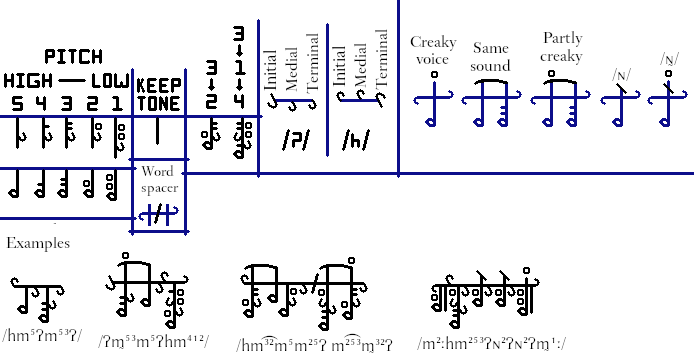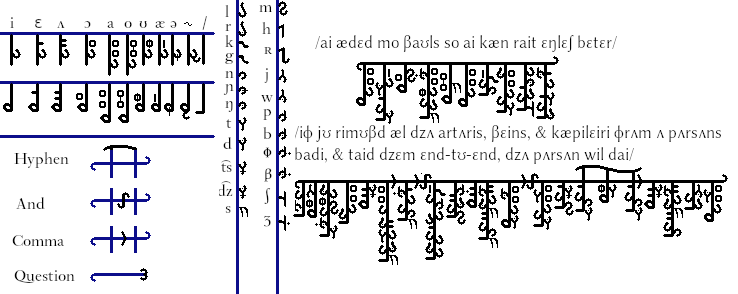I'm currently working on that second option, since it seems easier than trying to trace shapes on a paper cylinder around my globe. Thanks.
IndigoGollum
Is there any difference between pressing Super then Shift, and pressing Shift then Super? Maybe the Super key is something else on your shift layer.
I think the most unusual things in Bantalu are the phoneme i've written as /Ⓒ͜ˡ/ (only terminal, usually something like [d̚ˡ]); and the particle /no/ that separates the object and subject in a VOS sentence.
I'm not currently learning any conlangs, but a few years ago i learned some Ta'agra. I got into that through the Elder Scrolls, and even translated a short book from English into it. It's been a while but last i checked it did have a small community that did actually use the language to discuss things besides said language.
Is it possible that Shift and Super are swapped in Neo? I think that would cause this. Is it both Shift keys or just one?
In the picture you posted, it seems you set the keyboard shortcut in the settings for QWERTZ. Maybe that needs to be set for Neo as well?
I wouldn't mind a single simple character for "the", like what we have with the ampersand. I guess we do have "þᵉ".
mmmɁmhmm͡m mm hmmmh mɁm mmm?
Thanks for the suggestion. I'll look into Chao numerals. I know lots of transcription systems exist, i just usually use IPA because it's standard and well known. Any system that's easy to understand would work fine.
It's hard, perhaps impossible, to pick a single favorite from everything i read, but some of my favorites i currently read or have read in the past include Sombulus, Stand Still. Stay Silent., Aurora, Devil's Candy, Rusty & Co., Tamuran, Vainglorious, and Tales from Alderwood. They're all long stories, most of which are ongoing, and i have a list of several dozen more with links if anyone wants more. I also enjoy xkcd, SMBC, and Existential Comics.
At least put a napkin over it so no ashes fall in.
Only reheating it for a minute? Soup like foods need a couple minutes on medium-high power if you don't want ðem to be cold or get a microwave skin.


Cartography. A few days ago i bought one of those empty Christmas tree baubles to draw a world on in dry erase marker. I didn't have any maps of my world at that point, so i'm working forward from a globe to flat maps, instead of the other way round. I'm pretty close to being ready to make my first flat paper map.